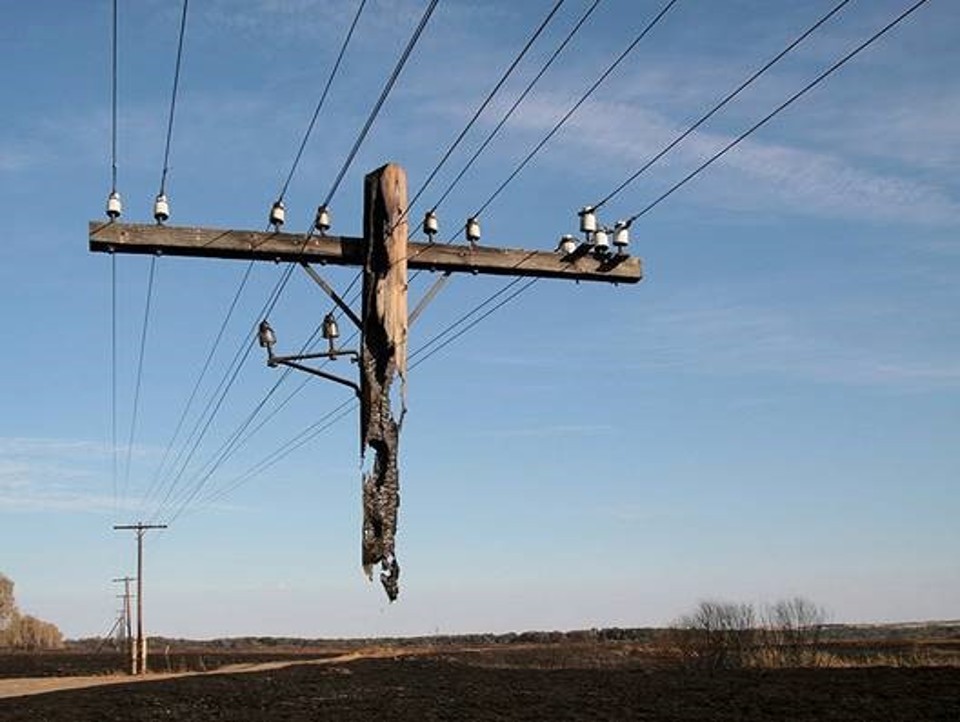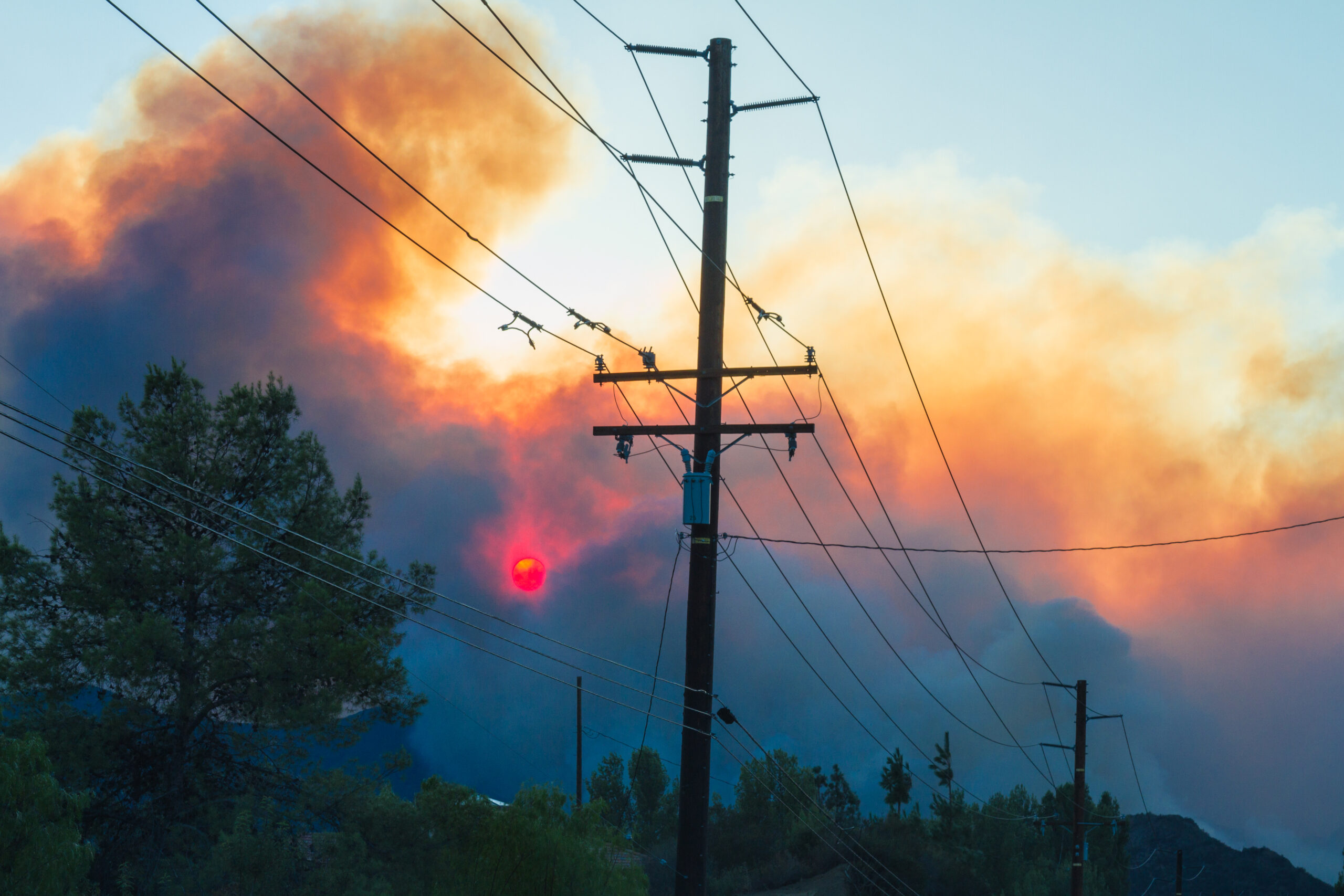From California to New York, extreme weather and wildfires are putting unprecedented pressure on utility distribution systems. As a result, utility leaders face a pivotal question: is it better to harden overhead systems or eliminate much of the risk through undergrounding?
The answer isn’t just about cost- it demands a holistic view of risk, geography, operations and long-term strategy. And increasingly, utilities are reevaluating the long-held assumption that undergrounding is prohibitively expensive.
What’s the Difference?
Hardening includes but is not limited to, the upgrading of overhead distribution systems with additional protection equipment, systematically upgrading or covering conductors, implementing pole hardening standards to include composite and concrete poles, and upgrading or adding advanced protective relays. It can be a cost-effective way to reduce both ignition risk and storm damage. Undergrounding removes lines from the surface and places them below ground via trenching, tunneling or directional boring. Though often seen as more expensive, it offers substantial long-term protection -and in many cases a lower lifecycle cost.
Wildfire and Weather Risk: What the Data Shows
Covered conductors can reduce wildfire ignition risk by 60-90%, depending on utility-specific factors like terrain and vegetation. When paired with technologies like high speed fault clearing, risk mitigation improves, but exposure remains.
Undergrounding pushes that mitigation into the upper 90% range. By burying lines, utilities remove the primary ignition source. While above-ground pad-mounted equipment remains, the overall fire risk drops dramatically. And when wildfires are sparked by external factors- lightning, human activity, or arson- underground systems will not suffer catastrophic damage.
Bottom line: Undergrounding not only prevents fires- it protects assets from destruction when fires break out.
Cost Isn’t What It Used to Be
While undergrounding still carries a higher initial construction cost, focusing on the upfront cost alone ignores critical pieces of the financial picture. The lifetime operational and maintenance costs of an overhead line may prove to be greater than the initial underground capital investment. Here are some factors to consider:
- Operations and Maintenance: Underground systems require less routine vegetation management, fewer routine and post-storm inspections, less frequent emergency repairs and improved driver safety for poles located near roadways.
- Outage Response: Underground lines reduce outage frequency and speed up recovery.
- Reliability and Customer Satisfaction: Fewer outages mean more than reduced restoration cost, they also translate to stronger reliability scores, which ranks highly for customer satisfaction, second only to cost. For most utilities, the top outage causes are trees, animals and equipment failure, all of which can dramatically be reduced with underground assets. For utilities in wildfire risk areas, undergrounding minimizes the need for Public Safety Power Shutoffs, helping keep communities energized during high-risk conditions.
- Rebuild Costs: Post-fire replacement for overhead infrastructure can be extensive and costly. In several recent cases across the country, wildfire liability tied to overhead assets has led to settlements and insurance claims in the billions of dollars. For some utilities, these costs have triggered bankruptcy or widespread operational restructuring.
- Public Safety Power Shutoffs: Underground systems may reduce the need for planned outages in high-risk zones.
The stakes of inaction are staggering. Across the U.S., utility wildfire-related settlements and legal judgments have reached into the tens of billions, ranging from multi-billion-dollar fire victim trust funds to denied ratepayer recovery requests and mounting jury verdicts. Even in cases where no admission of fault was made, the financial and reputational toll of being connected to catastrophic fire events continues to rise.
When modeled over a 30-year lifecycle, overhead and underground costs often converge- and in some cases, undergrounding proves more economical. Utilities that revisit design standards, streamline construction and deploy directional boring are set up for major future cost savings.
Geography Still Matters
Not every location lends itself to underground construction. Rocky terrain, narrow rights-of-way and urban congestion can complicate or prevent it. It is important to approach each project with a site-specific lens, factoring in:
- Soil conditions
- Access and easement constraints
- Existing infrastructure
- Vegetation and wildlife patterns
- Community priorities and permitting processes
Where overhead makes sense, hardening strategies deliver the best value. But where undergrounding is viable, the long-term cost benefits can far outweigh the traditional cost concerns.
The Risk You Can’t Ignore: Reputation
After every major wildfire, root cause investigations are essential. Even when utility equipment isn’t to blame, overhead assets are often scrutinized first.
Utilities with more above-ground infrastructure face greater reputational exposure and in some cases, legal liability. Undergrounding won’t solve every problem, but it can eliminate false claims of equipment failure by removing the possibility altogether.
A Deeper Decision-Making Framework
TRC recommends a five-part framework to guide undergrounding decisions:
- Assess wildfire and extreme weather risk by geography. While ignition risk may be a low-frequency event in some areas, the financial and legal consequences when disaster strikes are extraordinarily high. Nationwide, recent wildfire-related liabilities have topped $30 billion, transforming isolated events into existential threats for utility operations and infrastructure resilience.
- Evaluate lifecycle cost, not just capital expense.
- Identify construction and environmental constraints
- Consider public confidence, legal exposure and reputational risk to building or keeping overhead lines.
- Align investments with grants, rate cases and strategic planning
When this approach is applied, especially in high-risk areas, the justification for undergrounding becomes clearer. Even in regions with lower wildfire risk, lifecycle modeling can reveal hidden cost drivers in the overhead status quo.
Lifecycle Cost Modeling is a Game Changer
TRC helps utilities integrate technical, financial and environmental considerations into a comprehensive lifecycle cost analysis. Using our Lifecycle Cost Modeling Calculator, utilities can compare overhead and underground strategies with data-driven confidence, helping make the case internally or publicly for capital investments. These decisions are about financial durability. Factoring in the potential cost of liability, regulatory penalties and system rebuilds, lifecycle planning has become an essential shield against the financial volatility tied to extreme weather and wildfires.
Whether you’re evaluating feeder hardening, considering strategic undergrounding or looking to develop funding proposals, our experts can support your goals.





